The Master of Science Communication trains professionals, who can work effectively in a variety of fields, in science and technology communication and dissemination.
Indeed, the course delves into the different tools that science and technology communication can use today with an interdisciplinary approach and making use of multiple teaching methodologies.
The Master’s degree aims to provide the necessary cultural maturity and the appropriate technical tools to collect and transmit scientific and advanced technology information in a form that is both comprehensible and rigorous.
The units of the Master’s Degree in Science communication entail an education in written, radio, television and on-line journalism, institutional and corporate communication, traditional and multimedia publishing, museology and curatorship of scientific exhibits, promotion and management of scientific and technological culture diffusion initiatives, even with marked multidisciplinary natures, flanked by an increasing significance of “digital” science communications. The rich variety entails the use of different teaching methods: in-person lessons; workshop activities; outings in environments of ecological-naturalistic relevance; visits to exhibits, museums, scientific workshops, industrial plants; participation to conventions, cultural-scientific initiatives, some of which could be designed and managed with the Master’s students. Moreover, specific exams will be carried out for the different courses, to complement the training.
The Master’s Degree in Science Communication prepares scientific and technical communicators at professional level, coming from different scientific and humanistic cultural fields.
The purpose is promoting an effective interaction with the stakeholders of research in the different fields, and an effective organization of institutional communication structures, to promote and manage scientific culture diffusion initiatives. Students are trained to enter the scientific journalism fields with several communication means, including the newest network-based ones, to prepare and manage communication plans for research institutions, public and private organizations, scientific museums and science centres, schools, and technological innovation communication in advanced enterprises.
The Master’s Degree in Science Communication is divided into 12 modules, each one comprising several units:
Module 1: Public science and technology communication: statistical methods and data communication
The module introduces the statistical methods and their use in scientific and technical communication, the risk perception and communication, and visual data communication.
Module 2: Writing workshop
The module is designed as a professional writing workshop to learn how to write by writing. It is addressed to everyone who uses writing in their profession.
Module 3: Historical and language tools
The program introduces knowledge on the history of science and scientific communication, and on text layout in different types of texts.
Module 4: Systems and issues of earth sciences
Module 5: Topics and issues of life sciences
Module 6: Topics and prospectives of technology
Module 7: Topics and prospectives of basic sciences
These modules provide a framework of the different scientific and technological sectors, and delve into current perspectives, providing the tools to find updated and correct information.
Module 8: Communication through exhibits and in museums
It provides the knowledge and tools to manage science and technological communication through museums and science centres.
Module 9: Digital communication and social media
This module covers all the aspects related to new media and their management, and the knowledge and competencies of a social media manager, including storytelling and campaign result presentation characteristics.
Module 10: Institutional communication
It provides – also through workshop activities – an insight on institutional communication in the public and private research sector, in a local, national and international framework, the related regulations (law 150/2000) and goals. Students learn how to create a communication plan; it also describes the selection and assessment criteria of operative actions.
Module 11: Scientific communication over the air and the network
The module shows how to organize and develop a radio, TV and new-media program, related to scientific and technological communication, with hands-on practice.
Module 12: Scientific journalism
It analyses the information path, from laboratories to magazine pages, the storytelling behind an effective communication, the characteristics and special features of scientific news, truthfulness, verifiability, fake news, and urban legends, by providing also a few elements of deontology and ethics for scientific information. In this context, the course will also go over the organizational and technical aspects of how a magazine is created, how to run a scientific magazine, and the characteristics of a house organ.
The Master’s Degree in Science communication includes 200 hours of traineeships at public or private institutions or organizations, or companies. Traineeships are a chance for students to experience the labour market, and, in many cases, they have been a concrete possibility to get started in the scientific communication field. Since this is a very important opportunity, we recommend it over the project work. The rich list of affiliates includes museums, communication offices, press offices, institutions, organizations, companies and other central or peripheral realities to the University of Padua interested in communication. Among these, by way of example, there is the Azienda regionale per la prevenzione e protezione ambientale del Veneto; several local and national realities linked to the Istituto Nazionale di Fisica Nucleare; the Museo Tridentino di Scienze Naturali. Affiliating a new organization is relatively easily, and it can be done upon the students’ request.
The general ranking of merit for the academic year 2025/26 will be published on the Italian page of this Master according to the timing provided in the Call.
Information
FAQ
This is a first level specialisation course’s degree, therefore it requires a Bachelor’s Degree in any major, both technical-scientific or humanistic. Those with a master’s degree or doctorate have additional titles to access the Master’s Course.
The lessons usually start in mid-November and end in mid-July. Classes are held in person, except in case of limitations due to the pandemic. They include a wide range of options, with the use of several teaching methods.
Lessons are held on Friday, between 9:30 am and 12:45 pm, and 2 pm and 5:30 pm, and on Saturday, between 9 am and 1:45 pm, to facilitate working students.
After enrolling in the course, you need to attend at least 70% of the lessons, and complete 200 hours of traineeship at an institution, organization or company affiliated with the University of Padua. The traineeship can be replaced by a “project work” only for documented reasons. Moreover, you need to deliver a final dissertation and discuss it before the final examination Committee, formed by three professors, who will also evaluate your scores during the different tests held and assign the diploma.

